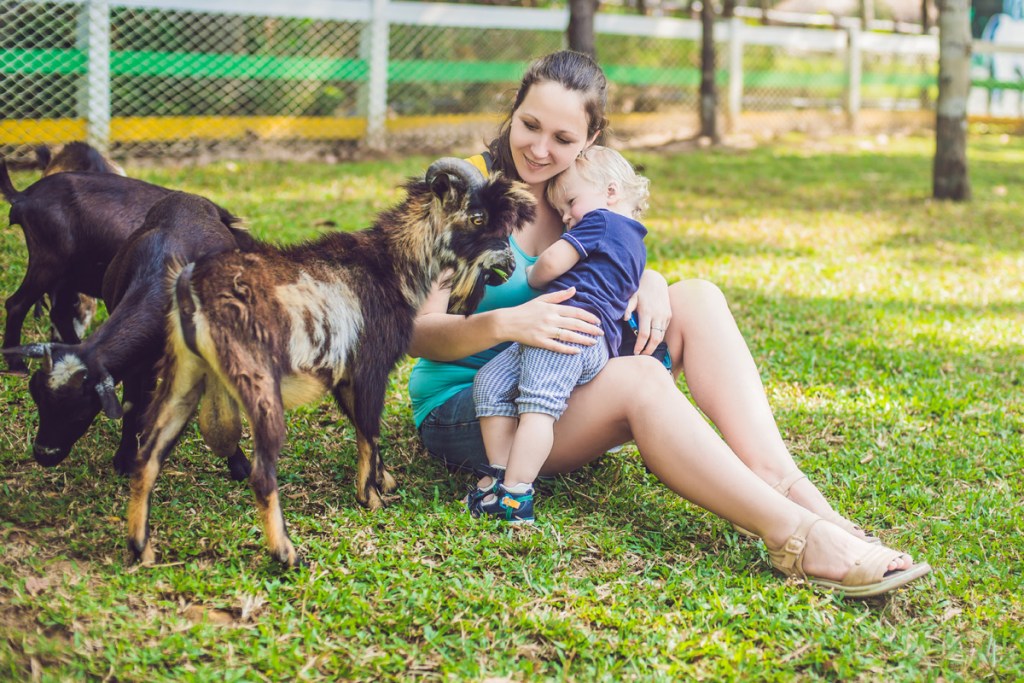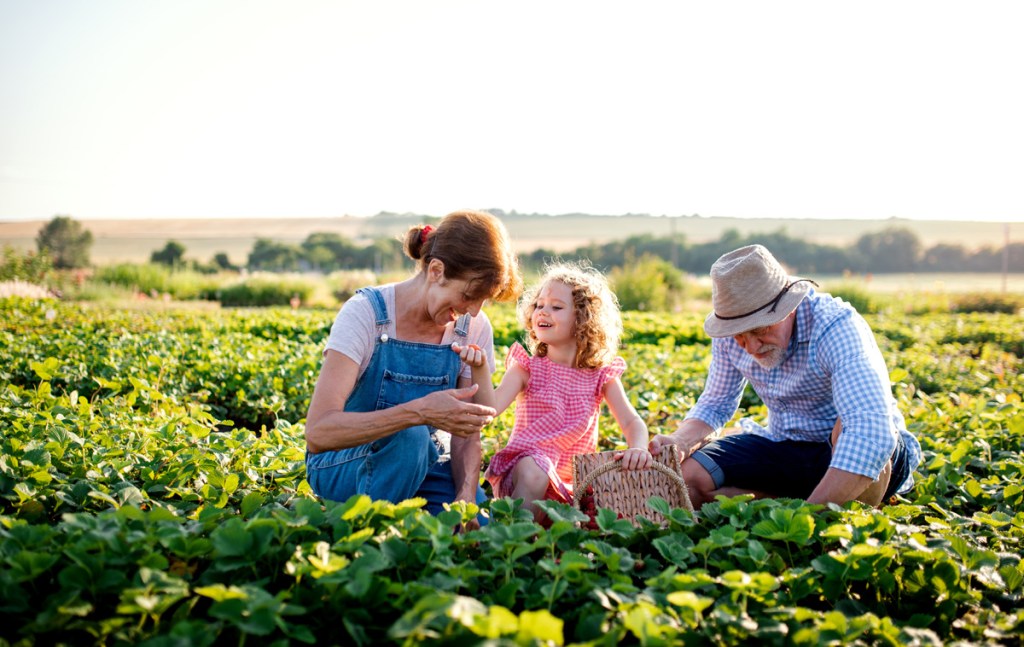For Amanda S., staying at Fat Sheep Farms and Cabins in Vermont was a dream come true. In a TripAdvisor review, Amanda shared that her farm getaway offered a glimpse of her “dream life as a shepherd living on a sprawling gorgeous Vermont farm with truly amazing views.” Whether you’re a wannabe farmer or just seeking a break from everyday life in the tranquility of a rural setting a working farm stay is a perfect choice.
In a Forbes magazine article, Scottie Jones, founder of Farm Stay USA, says inviting guests to stay on working farms and ranches is a great way to “build a bridge between urban and rural communities.” Instead of only meeting your local farmer at the farmers’ market, these vacations allow you to stay on a working farm where you can help care for the animals and learn how crops are grown, Jones says.
According to Jones, rural vacations on family farms have been popular in Europe since the 1980s. Inspired by this overseas popularity and the need to make additional income Jones and her husband opened their Leaping Lamb Farm in Alsea, Oregon, to paying guests in 2006. It was so successful, that in 2020 Jones founded Farm Stay USA as a way to bring this rural American travel niche under one banner.

What are farm stays?
Farm stay vacations provide an opportunity for guests to take a break from life in the city or the suburbs and spend a night, a weekend, or a few days living on a working farm or ranch. The destination you choose will depend on the type of experience you’re after. If your goal is to escape to the country and lounge out on a rustic porch while enjoying the sights and smells of the farm you can certainly do that. However, if you’re looking for a hands-on experience, there are plenty of farms and ranches that offer those opportunities as well.
Depending on the time of year, guests to Jones’ farm are invited to help with such jobs as feeding the animals and letting them out to pasture, bottle feeding lambs and kids (baby goats), collecting eggs, picking berries, and hunting for mushrooms. They can also enjoy hiking on trails along the Honey Grove creek that runs through the property, swimming in the creek, and stargazing at night.
On other farms, guests may be invited to help with milking cows and goats, spreading hay, and grooming horses. Activities on a ranch may include horseback riding and cattle wrangling. Guests staying at homesteads with a focus on growing produce are often invited to help with gardening or harvesting crops. Some farms may also offer classes on cooking with locally sourced food or cheese-making workshops using milk produced by the animals on the farm.
If you’ve always wanted a horse of your own, but can’t exactly fit one into your apartment, a working farm stay can give you a taste of the life you’ve dreamed of.
Are farm stays expensive?
According to Farm Stay USA, the cost of a farm stay varies greatly depending on the type of accommodation. It can be as low as $20 a night for camping to as high as $400 a night for a five-star guest house. There’s a wide range of accommodation choices when staying on a working farm. Some farmers host guests in the main farmhouse giving the sense of being part of the family. Other lodgings include wood-floored tents, a converted farm building, a guest house, or campsites. Some farm guest houses are extremely luxurious while others are rustic.
The overnight rate on some farms and ranches includes breakfast while on others, guests are welcome to bring their food or make meals with food sourced from the farm.

How can I find a farm stay near me?
Since the vacations listed on Farm Stay USA are all working farms offering authentic experiences this is a great place to search for your perfect rural getaway. This site allows you to search by state and whether or not the farm allows children and/or pets. You can then refine your results by filtering based on amenities, food, activities, price range, accommodation type, and accessibility. In 2020 Farm Stay USA partnered with Yonder, a platform for nature tourism that makes it easier for travelers to discover, book, and experience farm stays. Once you narrow down your search you can read reviews about individual farms on Trip Advisor to help you find the one that best suits your needs.
Finally, visiting a working farm means you’ll be heading out into remote locations and may not always be able to depend on Google maps or your GPS. Many farms will be visible from the main road but others may be hidden at the end of long, winding dirt roads. So, be sure to get detailed directions from the farmer before leaving home. Also, keep in mind that check-in at a farm isn’t like checking into a hotel. Depending on the time of arrival you may have to fend for yourself until the farmers are finished with their chores, but that’s all part of the charm when staying at a working farm.



